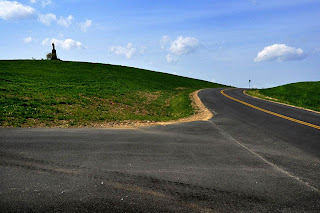 Hello,
everyone. Patricia Turner asked me to talk about what being a contemplative
photographer means to me. So, here goes.
Hello,
everyone. Patricia Turner asked me to talk about what being a contemplative
photographer means to me. So, here goes.
My
mission is to live a contemplative life, so first I'd like to talk about what
contemplation means to me.
Contemplation
is about meeting life from a particular stance.
And
that stance looks like this - being open and transparent; being curious about
life. It's about listening well, without judging, controlling or comparing.
There's no punishing; there's no winning or even losing. There is love,
compassion, and kindness.
From
this stance, I see and recognize that everything is about relationship. We are
impacted by everyone and everything, and vice versa. We have the power and the
privilege to make an impact with our every action, which makes it so important
that those actions spring from contemplation.
Do
I always operate from this stance? Of course not, but these are all habits that
can be cultivated and photography helps me to practice.
Mentors in Contemplative
Photography
I'd
like to share with you some of the people who have influenced my thinking about
contemplation. It's a diverse mix, and from them I've come to my own way of
living a contemplative life.
Freeman Patterson and Andre Gallant, well-known Canadian photographers, taught
me to see the underlying foundation of everything – the visual design inherent
in every image. They were the first to show me how labels limit our seeing.
Frederick
Franck, artist and writer, wrote the classic book The Zen of Seeing. He taught me to experience wonder and essence
through drawing.
Thomas
Merton, a Trappist monk, demonstrated the value of solitude and taking a long,
loving look. He was really in love with the world.
And
more recently the Miksang approach to contemplative photography, taught by
Michael Wood and Julie DuBose, showed me how to become more aware of my initial
perceptions.
These
are the perceptions that come before we put labels on things. We don't really
realize how quickly our perceptions are covered over by conceptual thinking.
Finally
Seth Godin, who is a business blogger, not a photographer, is all about seeing
and noticing in new ways. What he's taught me is that everyone has a unique way
of seeing and that it's important to share that with the world.
So how does photography fit
into this?
Photography
is the tool that helps me to slow down, be present, and pay attention to my
life. And then, to engage.
Being
a contemplative photographer means everything to me. I see things in really new
and exciting ways all the time. The more I practice, the more there is to see.
Photography
also helps me to be more self-aware because what we see and notice reflects our
inner state to some extent.
For
example, my photography tends to go in themes and last winter I noticed that I
was photographing vines growing on surfaces. Then, in the spring I was noticing
blossoms at my feet. I like to write about how these themes reflect whatever's
going on in my life at the time.
Contemplative
photography is a really joyful experience for me and helps me to handle
whatever comes my way in life, hopefully with grace.
Thank you Kim! It is always good for people to read about how others approach this diverse and fascinating field of contemplative photography! You can visit Kim's blog, 365 Days of Inspiration for more of her thought provoking commentary on contemplative photography. There is always a link to her blog in the right sidebar. Here is a link to her manifesto for living a contemplative life entitled Widen the Lens...short, concise and very much to the point. Read it here and sign up for here weekly newsletter and download the poster for free!



























